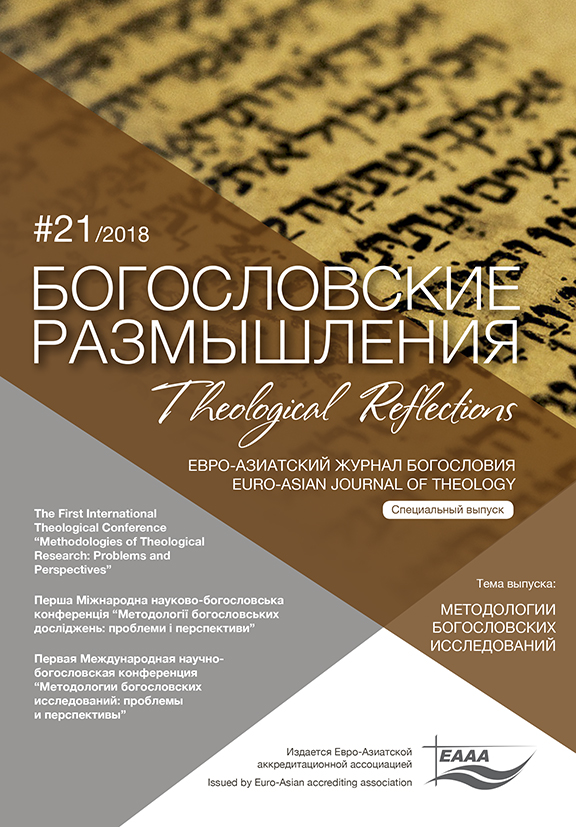Methodological Possibilities of the Theo-aesthetics for the Analysis of Cultural Artifacts
DOI:
https://doi.org/10.29357/2521-179X.2018.21.12Keywords:
film and theology, David B. Hart, theological aesthetics, methodology of film analysis, Gregory of Nyssa, Andrey Zviagintsev, Loveless (film)Abstract
This study presents a certain perspective on viewing reality through the lens of theological aesthetics. In particular through the concept of Beauty as a transcendental as presented by David Bentley Hart. Thus, his treatment of the concept by Gregory of Nyssa is applied to the analysis of cultural artifacts. So, the study concentrates on the concepts of epektasis, apatheia, and perichoresis as presented by Hart. There is also a short overview of analogia entis in relation to discovering God's revelation in different art pieces. On a practical level this study bases this discovery on an example of film analysis, which could be used as a methodological matrix for the analysis of other cultural artifacts.
References
- Ebiri, Bilge. «Andrei Zvyagintsev on His Tragic Fairy Tale “Loveless,” Today’s Russia, and Selfies: Russia's foremost living filmmaker on making art out of his country's travails» (May 24, 2017), https://www.villagevoice.com/2017/05/24/loveless-is-a-tragic-fairytale-we-can-all-believe-in/
- Hart, David Bentley. The Beauty of the Infinite: The Aesthetics of Christian Truth. Grand Rapids, Mich.: W.B. Eerdmans, 2003.
- Hart, David Bentley. In the Aftermath: Provocations and Laments. Grand Rapids, Mich: William B. Eerdmans Pub. Co, 2009.
- Hart, David Bentley. The Hidden and the Manifest: Essays in Theology and Metaphysics. Grand Rapids: Eerdmans Publishing Co, 2017.
Downloads
How to Cite
Issue
Section
License
Copyright (c) 2020 Denys KONDYUK

This work is licensed under a Creative Commons Attribution-NonCommercial 4.0 International License.
All articles published in the Journal are distributed under a Creative Commons Attribution-NonCommercial 4.0 International License
By submitting an article for publication in Theological Reflections: Eastern European Journal of Theology the author grants the editors the right to publish the article and distribute it in electronic and print form.
The author reserves all copyrights and the right to use the materials of the article in whole or in part for educational purposes, to write his own dissertations, to prepare abstracts, conference reports, oral presentations, etc., as well as post electronic copies of articles (including the final electronic version downloaded from the journal’s official website) on non-commercial web-resources without the consent of the editorial board and founders.



